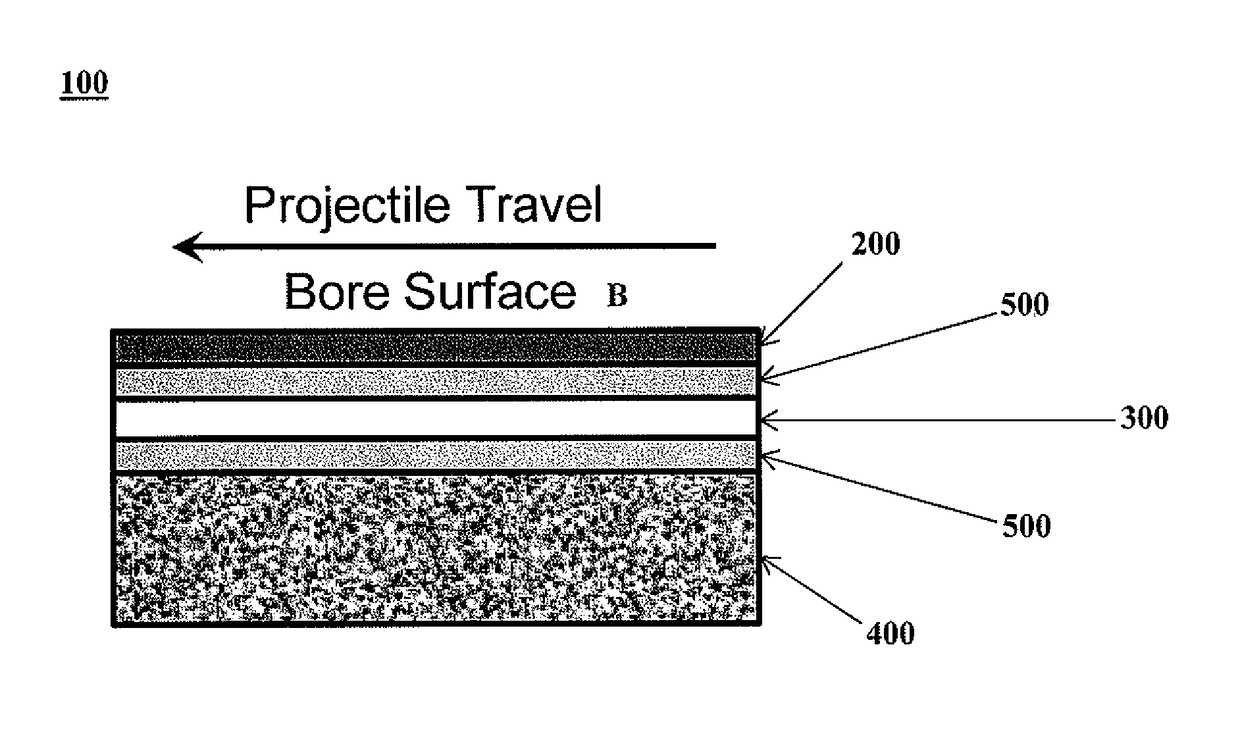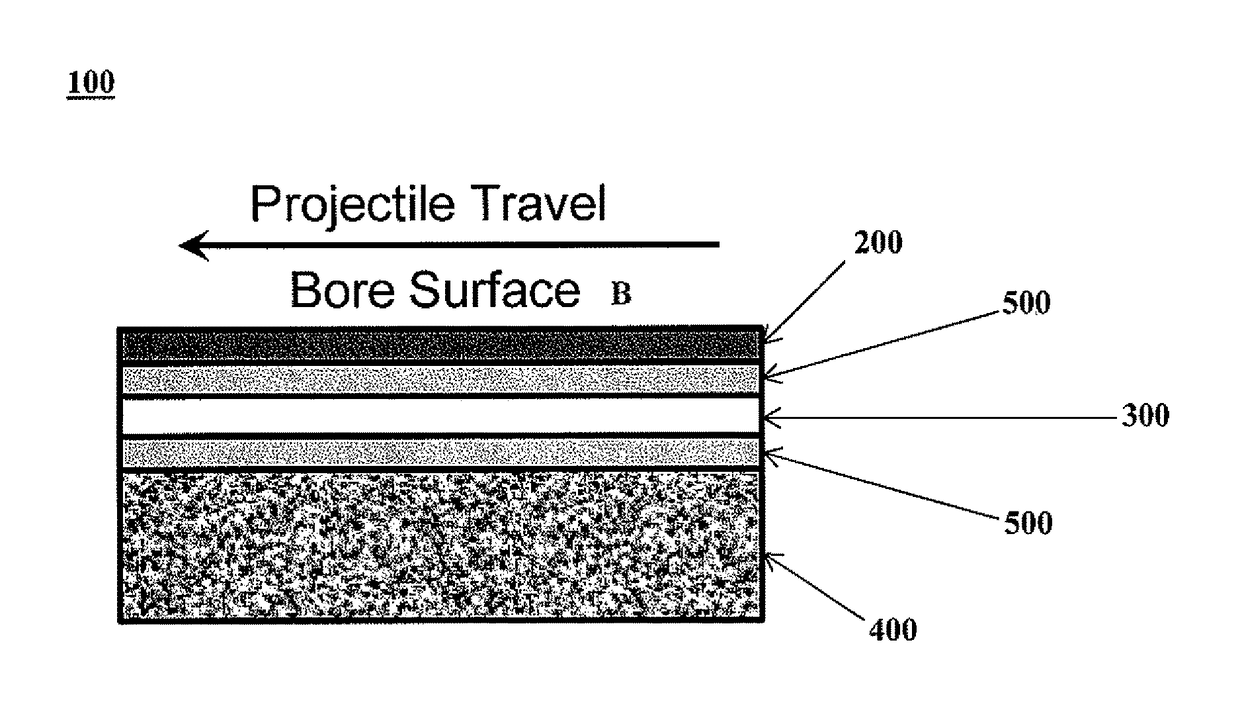Multi-layered mortar tube
- Summary
- Abstract
- Description
- Claims
- Application Information
AI Technical Summary
Benefits of technology
Problems solved by technology
Method used
Image
Examples
Embodiment Construction
[0010]Disclosed herein is a mortar tube defined by a muzzle end, a breech end and a seamless rigid wall along the longitudinal axis encasing a hollow bore. The rigid wall is comprised of multiple heterogeneous layers having the main elements of 1) an inner bore facing layer, 2) an intermediate ceramic based thermal barrier layer and 3) an outer shell layer. The plurality of layers are cohesively integrated with each other in a seamless manner to yield a rigid and immobile mortar tube wall.
[0011]The improved mortar tube meets the same performance specifications of standard steel or superalloy mortar tubes. The multi-layered mortar tube allows for firing of the same ammunition, at the same firing rate and the same wear life but without the added weight of comparable steel mortar tubes. Such improved mortar tube weigh at least 30-70% less compared to legacy steel tubes. This permits the soldier to carry less weight thereby increasing maneuverability and freeing up the weight burden to ...
PUM
| Property | Measurement | Unit |
|---|---|---|
| Temperature | aaaaa | aaaaa |
| Temperature | aaaaa | aaaaa |
| Thickness | aaaaa | aaaaa |
Abstract
Description
Claims
Application Information
 Login to View More
Login to View More - R&D
- Intellectual Property
- Life Sciences
- Materials
- Tech Scout
- Unparalleled Data Quality
- Higher Quality Content
- 60% Fewer Hallucinations
Browse by: Latest US Patents, China's latest patents, Technical Efficacy Thesaurus, Application Domain, Technology Topic, Popular Technical Reports.
© 2025 PatSnap. All rights reserved.Legal|Privacy policy|Modern Slavery Act Transparency Statement|Sitemap|About US| Contact US: help@patsnap.com


